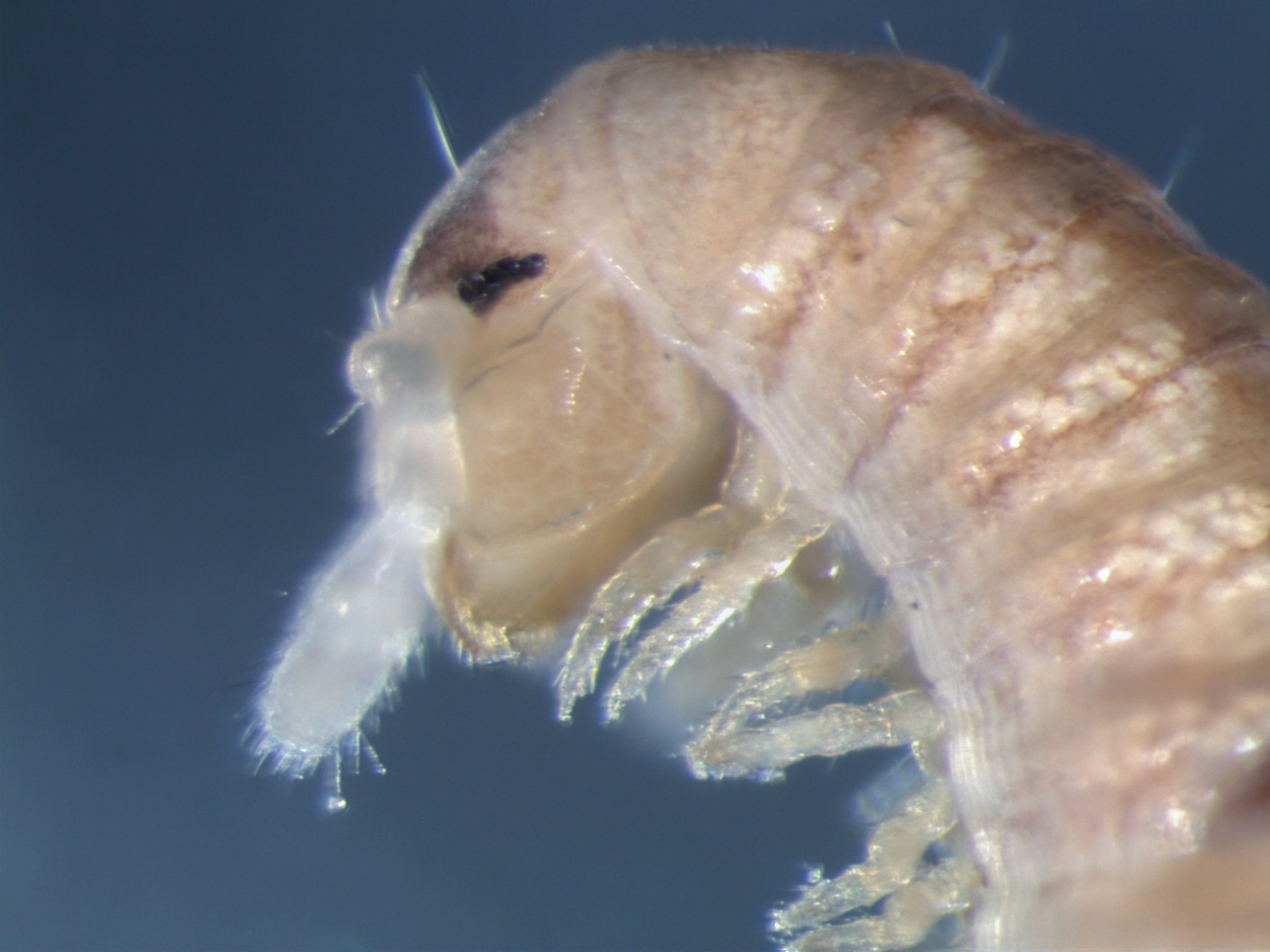2b. Epiproct not produced, or if produced, not bifurcate……………………………….………....3.
3a. Body rings with strongly impressed striations encircling entire ring……………………………4.
3b. Body rings with slightly impressed striations only present below the level of the ozopores………. ...………………………………………………………………………………………………….6.
4a. Gnathochilarium with promentum short, only separating lamellae linguales basally; male first leg pair hook-like; body length ca. 7-30 mm..........……………………………………….…….Julidae.
4b. Gnathochilarium with promentum long, completely separating lamellae linguales; male first leg pair very short, with small tibial outgrowths directed sublaterad; body length ca. 16-165 mm………
………………………………………………………………..………..……Paeromopodoidea, 5.
5a. Large-bodied millipedes ca. 51-165 mm long, with broad longitudinal yellow stripes or dark to light transverse bands on body rings…………………...…………………………Paeromopodidae.
Western North America: distributed in California, Oregon, Washington, Idaho, and Montana; two genera: Paeromopus and Californiulus. Includes the largest millipedes in the Nearctic region.
5b. Small-bodied millipedes ca. 16 mm long, with body rings dark mottled brown and lacking longitudinal stripes or transverse bands…………………...……...…………Aprosphylosomatidae.
6a. Large-bodied millipedes ca. 19-58 mm long, diameter ca. 2 mm or more; strongly pigmented, light orange to dark purple; males with greatly enlarged first leg pair; ocelli present in a triangular field; mandibles with 6 or more pectinate lamellae………………………………..……Parajulidae.
6b. Small-bodied millipedes ca. 5-20 mm long, diameter less than 1 mm; depigmented to bronze brown in color; male first leg pair not greatly enlarged, but may be modified into hook-like structures or have reduced podomeres; ocelli absent or present in a linear row or triangular field; mandibles with 4 or 5 pectinate lamellae……………………………..……………………………7.
7a. Sternites free from pleurotergites, with anterolateral wing-like expansions; eyes present in a triangular field; male first legs reduced in size, but not hook-like……….…...…….Nemasomatidae.
Two genera: Orinisobates and Thalasissobates. Orinisobates is associated with rotting logs in the Pacific Northwest and Central Appalachians, with disjunct records from Illinois, Florida, Utah, and Wyoming. Thalasissobates is associated with littoral habitats on the Atlantic Coast and has been reported from New Brunswick, Massachusetts, and Virginia.











